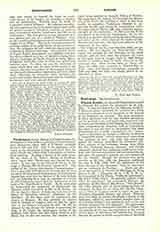

Vineam Domini, an Apostolic Constitution issued by Clement XI against the Jansenists on July 16, 1705. It was occasioned by the following incident: A Jansenist priest, ostensibly the confessor of a dying ecclesiastic, proposed seven questions to the doctors of the Sorbonne for solution. The most prominent of these questions was the one whether absolution can be granted to an ecclesiastic who confessed that he rejects, in the sense of the Church, the five propositions condemned by Innocent XII as Jansenistic; but, since it was not clear to the penitent that these propositions are actually contained in the “Augustinus” of Jansenius, he thought it sufficient to observe a “respectful silence” (silence respectueux) concerning this question of fact, and, with this restriction, signed the formula prescribed by Alexander VII. Forty doctors of the Sorbonne, among them Ellies Du Pin, Petitpied, Bourret, Sarrasin, and Natalis Alexander, decided that absolution could not be with-held, since the case was neither new nor extraordinary, and since the penitent’s opinion was not condemned by the Church. Though the decision was given secretly on July 20, 1701, the Jansenists published the case in July, 1702, with the signatures of the forty doctors of the Sorbonne: “Cas de conscience par un confesseur de Provinceresolu par plusieurs docteurs de la Faculte de Theologie de Paris.
Lettre de M Chanoine de B. a M. T. D. A. It is reprinted in Du Plessis, “Collectio judiciorum”, III (Paris, 1736), 413-7. As probable authors of the “Cas de conscience” are mentioned: Eustace, the confessor of Port-Royal (Ste-Beuve, “Port-Royal“, VI, 169); Frehel, cure of Notre-Dame-du-Port, at Clermont (Le Roy, loc. cit. infra, 98); Du Pin (Guarnacci, “Vitae et res gestae pontif. et card.”, II, cap. xi); Petitpied; Alquebille Perrier; and others. Whoever may have been its author, Roulland, a doctor of the Sorbonne, edited it, and Cardinal Noailles knew of its existence before it was published, and is even said to have promised his own signature. Its appearance caused a great stir among the Catholics of France, for the solution of the case was equivalent to the revival of one phase of Jansenism, the opinion that the pope has not the power to decide on questions of doctrinal fact, i.e. whether a certain book contains or does not contain errors against faith. The solution was condemned by Clement XI in his Brief “Cum nuper”, dated February 12, 1703. The pope at the same time urged King Louis XIV and Archbishop Noailles of Paris to take energetic measures against all recalcitrants. Despite the banishment of five doctors of the Sorbonne who refused to submit, the controversy continued, and King Louis XIV, seconded by the Bourbon King Philip V of Spain, requested the pope to issue a Constitution condemning the so-called respectful silence. Since Louis XIV insisted that the Constitution should contain no expressions contrary to the Gallican Liberties, its issue was somewhat delayed and finally, after its contents had been communicated to the king, the Constitution “Vineam Domini Sabaoth” appeared at Rome on July 16, 1705.
This Constitution begins with a confirmation of the three Bulls—”Cum occasione” (Innocent X), “Ad Sacram”, and “Regiminis Apostolici” (Alexander VII)—that had been previously published against Jansenism, and contains their entire text. Then follows a defense of Clement IX and Innocent XII against the calumnies and misinterpretations of the Jansenists. To this is added a severe rebuke of those who, by what they term respectful silence, pretend to obey the Apostolic Constitutions while in reality they deceive the Church and the Holy See. The Constitution ends with a solemn declaration that a respectful silence is by no means sufficient, obsequioso illo silentio nequaquam satisfieri, that all the faithful are obliged to reject and condemn as heretical, not only with their mouth, but also with their heart, the sense which was condemned in the previously mentioned five propositions of the book of Jansenius, and which the words of the propositions naturally have. “Damnatum in quinque prwfatis propositionibus Jansenii libri sensum, quern illarum verba prae se ferunt, ut praefertur, ab omnibus Christi fidelibus ut hwreticum, non ore solum, sed et corde rejci ac damnari debere.”
The Constitution arrived in France while the Assembly of the French Clergy was in session. It was accepted by the Assembly on August 21, not, however, until it had been decided to accompany the Constitution with the declaration that “the papal constitutions are binding on the whole Church when they have been accepted by the bishops”, thus making it appear that the Constitution received its binding force by the acceptance of the bishops. On August 31, the Constitution was made a state law. It was accepted by all the French bishops with the exception of Percin de Montgaillard, Bishop of Saint-Pons, who published a mandement in defense of “respectful silence”. The mandement was censured by Clement XI on January 18, 1710, and the bishop finally submitted in a long letter to Clement on February 28, 1713. The Sorbonne accepted the Bull on September 1, 1705. The nuns of Port-Royal refused to accept it, except with certain restrictions, and, in consequence, the king obtained the pope’s permission to suppress their monastery. (See Port-Royal.)
On August 31, 1706, Clement XI addressed a Brief to Cardinal Noailles and another to Louis XIV, in which he scathingly reproved the French bishops for “usurping the plenitude of power which God has given exclusively to the Chair of St. Peter”, and demanded that they recant the scandalous declaration which they had appended to his Constitution “Vineam Domini”. After various evasions Cardinal Noailles was finally prevailed upon, as the president of the Assembly, to sign, on June 29, 1711, a document drawn up by the pope in which it was expressly stated that the acceptance of the bishops is not necessary to give the papal constitutions their binding force.
MICHAEL OTT

